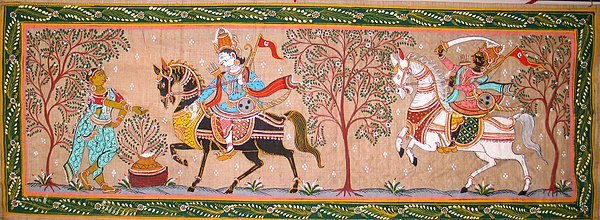Identities, Cultural Hegemony, and Subtle Affirmations over Summer and Slosh.

The sun is scorch earth like chris gayle on an antepodean summer’s night at the melbourne cricket ground, and I have been loosening up from the year that has been. Every irk passed on by human evolution and migration and genetic mutations and the resulting cultural differences, is also a 3 layered gift. Anonymity begets obvious crises of identity, but sometimes it also sets us free.
So without further del-del I begin with a white spark. And forgive me if I ever sound too proud or pompous, or self-aggrandizing, I don’t mean to be. What I mean to discuss in this post is elicit some historical facts and engender some interpretations, which seem much needed now, and because no one else will do it. Because we’re at a tipping point. Then and here and Now.
The state of odisha spans 155,000 square kilometers. I didn’t google or bing it. I know it cause lately I cannot shake it out of my head, that how can a state as big as Kerala can be so completely out of the national consciousness and attention and psyche.
I would like to start with the occupation of sri lanka by the Odia king Vijaya. We’re all aware of places where cultures collide and amalgamate. Samarkand, Jamestown, Asuncion, Istanbul. It also happened in Sri Lanka, when people from ancient Kalinga migrated and populized the emerald isle. As a result Sri Lankans today actually share at least 30 to 40 percent of their DNA markers with people from Odisha. Sinhala, in case you might not know, is an indo aryan language, despite of its close proximity to Southern India. And that is why they had an attritional relationship with the Tamils, culminating in Civil War and pandemonium. Even the Sinhala names today seem to be related to old Odia/a mix of Parkrit and Sanskrit. You see reminiscents of this relationship in Odisha, not least the Goddess Lankeshwari.
Pivoting over the clock hand to East, Odia maritime relations with Southeast Asia have had monumental impacts on the region’s cultural heritage, food, language, and traditions. Maritime trade between and southeast asia prospered during the almost 2000 years after the Kalinga war where Ashoka won, and the odia people had proven to be a resilient community, not just as a society, but as traders and sailors and bureaucrats. Ravaged by war, they wanted to migrate to far away shores to breathe and prosper, and they did more than just that. The major Odisha-exclusive festivals, like Kartik purnima, Khudurkuni Osha, Bali Yatra and what not, are in fact remnants of an once glorious, and unique Indian dichotomy. Identical festivals in Bali, Laos, Cambodia are observed at the same time.
The prince of Kalinga, which of course is the older name of Odisha, is said to have sent 20,000 odia families who went and settled in Bali. A lot of them being brahmans, the odia immigrants in bali were called Brahmana Buddha Kalinga. The Indian immigrants in Indonesia are still called Kalings. Those in Malaysia, Singapore, and elsewhere are called Klings. And the Balinese food is almost identical to Odia food, using exotic and commonplace green vegetables in Odisha. Words like Bou and Ajna(inge) speak of a clear cultural heredity.Not to speak of Balinese manuscripts written on palm leaves, like the Odia Pothis. This all information overload is not just startling, but also tragic in itself, because it is unknown and not spoken of, put into a straitjacket and tied to a rock, before being thrown into a deep bay.

Moving closer to the Indian border, to Burma, Odia literary and cultural heritage have had considerable impact out there too. Odia immigration is quite clear from the changes of names of places in Burma, such as Srikset, coming from Srikshetra, which is the dham at the Puri temple by the way. The old name of Pegu is Ussa, and there are records of it being colonized by people from Odisha. The influence on Burmese art by Odia art has been clear and conspicuous. The Odia traders even forayed into China, with the Chinese emporor Tse-Tsang receiving an autographed manuscript of the Buddhist epic Gondavyuha from the Bhoumkara king of Odisha. Huen-Tsang in gis travels mentions the major seaports of Tamralipti, paluna and pithunda, which were instrumental in the dynamic trading environment that existed.
The Sevivaya Jataka mentions a city in Andhra Pradesh on the river Telavaha which is actually Tel in modern Kalahandi in Odisha.
Moving to that tropical paradise we know as Thailand(where you get direct flights from the geographical centre of Bhubaneswar), the Srivatsa motif of Chansen in Central Thailand are in fact extremely similar to the inscriptions in Hati Gumpha(elephant caves) of Odisha. Archeological excavations have further corroborated these relations. The Odia traders also named one island as Singha pura, the land of the lion, now known as singapore. You(I) can go on and on about the architectures of the angkor wat in cambodia, and the old odia sounding names of sri lankans and the cambodians and the balinese. But for now, I think this is a good start, lest you get bored and throw that delicate device you’re reading from out on to the tarmac. Perhaps you did already. As for me, the anonymity feels amazing. Of being neither from one place nor another, yet having a sturdy grip on remembrance and reality.

Sources:
[1] :https://strangersguide.com/articles/indian-influence-in-cambodia
[2]: https://magazines.odisha.gov.in › …PDF
ORISSA AND SOUTH-EAST ASIA : RECENT PERSPECTIVE
[3] :http://www.kiips.in › research › odis…
Odisha-Indonesia Relations: A Cultural Symbiosis